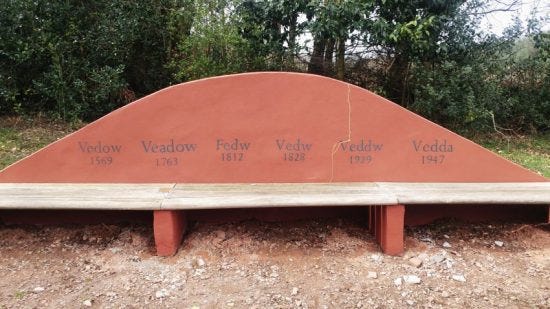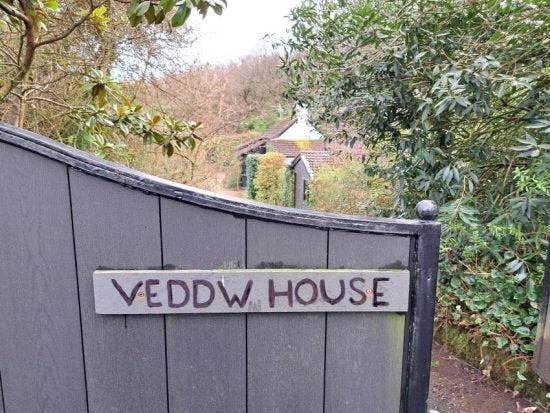You can see I love names. If you want to know more about these, see here.
I love names, they are full of history.
Even the terrible Latin names of plants and most of the Common names. (Those which were not just invented by people who think we can’t cope with proper names). And I love house names, full of history and eccentricity.
Apart from the houses of the mega rich and tradesmen’s properties, our houses didn’t generally have names until around the 1860s, with the coming of the railways and subsequent arrival of the suburbs. Apparently “the new suburban houses were ripe for naming because numbering could only be sequential once all the houses in a street had been built.” See ‘How house names tell the story of centuries of social change in Britain.
You’ll be wondering where plants manage to get in here. Well, they don’t, much.
But – which of you names parts of your gardens?
When we first came and began to make a garden in our two acres it seemed terribly pretentious to name any bits of it. That was certainly something the grand garden owners did, but we were mucking around rather helplessly in two fields. However, my first effort was a Veg Plot and that was what you might call a common or garden name. And, as more garden was made, it became apparent that we needed to be able to tell each other where we could be found. Or at least, that was the idea. I still find Spring problematic because that is where trying to find Charles in the house becomes trying to find Charles in the house or garden. We have just acquired (we believe) four extra fields, so this search will not have become easier. Still, he went off to a field this afternoon and actually told me where he was heading before he left.
This is what we have (so far) =

Most of the names came effortlessly. A meadow is a meadow; a few fruit trees, an orchard; an ex coppice, a coppice. When we acquired a wood, that became ‘Charles’s Wood’ because he had fought the Forestry Commission for a long time to persuade them to let us buy it. But truth is, we call it ‘The Wood’. The Front Garden is where and what you might expect. But if anything isn’t obvious it’s more difficult. I think the process is that you think of a name and try it out. If it doesn’t work – meaning it never gets used – it fades out of use, and something else may pop up instead.
So in truth, most of the garden names are rather prosaic. Though some have history almost accidentally – ‘Chris’s Seat’ is a courtesy name because Chris Young was visiting when we were trying to get the shape right so that the slope was cunningly disguised. His help was very helpful, so hence the name.
The Wild Garden is so named because I have simply planted into the original field, without clearing it. When Noel Kingsbury reviewed the garden in Gardens Illustrated he said “The planting is not nearly complex enough to evoke a natural habitat, or structured enough to be successful as a border.” It strikes me that this and that part of the garden are interesting as unusual horticulture. Anyone else done this planting straight into grass/pasture thing? A different kind of ‘no dig’.
Some names already speak of history – we have a Cotoneaster Walk, and the name now commemorates the cotoneasters which we loved and which died of fire blight. Though there are some seedlings begining to make their mark and maybe heralding a return.
We are in the process of adding four fields (Just as our contemporaries downsize) and
naming them brings us back to the question of how do you do it? Well, one may be obvious. It had a cottage in many years ago, and someone planted snowdrops. Which have spread wonderfully, right up to the wreck of a car which someone once added, maybe later. I think it may be the snowdrop field, but the car or the (invisible, buried) cottage may take over?
We have no idea how anyone got this car into the bottom of the rather steep field.
But the snowdrops set it off nicely.
So the question is – do name parts of your gardens? How do you find the names? And if you don’t, isn’t that problematic?










Well,with your now acres you've become a Grand Garden I guess.
I too struggle with how to identify parts of my garden so that I can refer to them with visitors or helpers. I tend to rely on a significant or central plant for the name -- like the Heptacodium garden or the Yellowwood garden. But sometimes I can no no better than "long perennial border" which my partner says does not help her distinguish what I am talking about from any other garden bed. She herself has the "veg plot" and so does not face my challenges. Absolutely adore your posts.